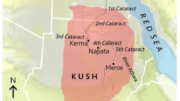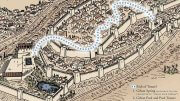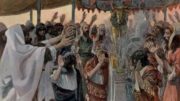Then Jacob called his sons and said, “Gather yourselves together, that I may tell you what shall happen to you in days to come. – Genesis 49:1 (ESV)
Steve Law | Patterns of Evidence
Last week’s Thinker Update showed how archaeological evidence for worship of foreign gods and idols among ancient Israelites actually fits the picture painted by the Bible. This week’s update will apply that reality to cover an intriguing interpretation of an impression made by a cylinder seal found at Avaris.
Could the symbols found on this seal be evidence that it belonged to Joseph’s family during their time in Egypt?
The find was uncovered from the ancient city of Avaris, modern Tell el-Daba, in Egypt’s northeast Nile delta. Excavations by the Austrian Archaeological Institute of Cairo at the site were conducted for several years in the 60s and then from 1975 onward until today. Manfred Bietak was the director of the digs from 1966 – 2009. In 1979 his team discovered an intriguing little cylinder seal on the floor level of the Middle Kingdom palace.
Seals were very common in the ancient world and were typically used to press into clay or some other soft substance to put an owners stamp on commercial and legal documents or products, and for tamper-proofing whatever was inside a container. Seals were often worn around the neck or as rings by officials or their representatives. They could bear a single image (as would be the case with a ring) that would require only a single push into the soft clay (bulla), or they could be in the form of a small cylinder that would be rolled on the clay to impress a longer sequence of images.
The fact that this seal was discovered in association with the Middle Kingdom palace is significant, because this was the period highlighted in the film Patterns of Evidence: The Exodus when Jacob, Joseph and the first generation of Israelites lived in Egypt. This was before their exodus from that land under the leadership of Moses.





